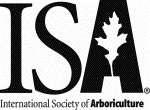
| Current Articles |
| Browse Archives |
| Search |
| Contact Us |
| AUF Home |
 |
Arboriculture & Urban Forestry Online
| Volume 48, Issue 6 —
November 2022
https://www.isa-arbor.com/Publications/Arboriculture-Urban-Forestry |
|
Accuracy and Precision in Urban Forestry Tools for Estimating Total Tree Height Alexander J.F. Martin Abstract: Background: Urban tree inventories are fundamental to the monitoring and management of urban forests. Various handheld tools and methods exist to conduct tree mensuration, ranging from the simple stick method to laser rangefinders. This study examines the accuracy and precision of the stick method, clinometer, and laser rangefinder, and introduces tree type (i.e., conifer versus broadleaf) comparisons of accuracy and precision. Methods: Measurements were taken from 127 trees comprised of 85 (66.9%) broadleaf and 42 (33.1%) coniferous trees. Trees were distributed across 4 urban land use types: park, golf course, street, and trail system. A drone-mounted measurement tape was used to determine true height. Results: Measured heights ranged from 4.67 m to 25.71 m (x¯ = 13.19 m). Measurements from the stick method yielded statistically similar results to both the rangefinder and clinometer methods. The methods had a Cronbach’s Alpha of 0.991 (N = 3). Accuracy was highest for the rangefinder and lowest for the stick method. Precision was greatest between the rangefinder and the clinometer. Root-meansquare error (RMSE) and percent error were highest for the stick method and broadleaf trees for all 3 measurement methods. Conclusions: The findings indicate greater accuracy and precision across all tools when measuring conifers. The rangefinder was similar in accuracy to the clinometer, with notable changes in accuracy when using the stick method. Keywords: Forest Biometry; Forest Mensuration; Hypsometer; Tree Inventories; Urban Tree Measurements. |
Current Articles
| Browse Archives | Search | AUF Home | ISA Home
| Get Acrobat